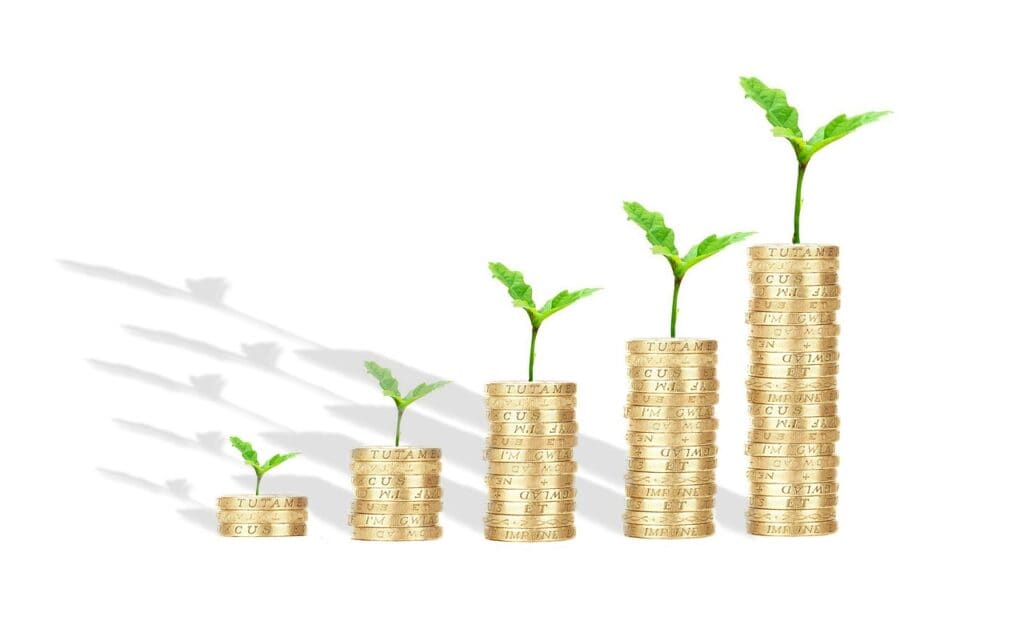The 3 pillars of building wealth are getting out of debt, spending less than you make, and saving for retirement. When looking at saving for retirement, a Registered Retirement Savings Plan (RRSP) is one of the most valuable tools in the Canadian personal finance ecosystem.
It’s important to have a baseline personal finance plan if you’re regularly traveling.
It can be difficult to save for retirement when you are living in Canada. The cost of living is high, and it seems like there are always other expenses that take priority. However, it is important to know how and when to save for retirement as early as possible, so you can enjoy a comfortable future.
I don’t think we need to go into too much detail about why saving for retirement is essential for building wealth. I assume most people would like to live comfortably once they retire, and would rather not be slaving away well into their 70s.
When it comes to retirement, most people think that the Canadian Pension Plan will take care of them. However, with the average CPP payout being just $619.75 per month per month, it’s important to save for retirement on your own. The Old Age Security maximum is $613 per month, but most Canadians don’t reach that maximum amount either.
That’s why it’s important not to rely on government subsidies, and why you need to build your retirement nest egg.
15% of your pre-tax income is the magic number we recommend, although that number may be higher, or lower depending on your needs at retirement. Personal finance is…….personal.
There was an interesting 2017 Survey of Household Spending by Stats Canada which concluded that the average household spends ~60,000 after the age of 65. Assuming you live until you’re 82, and retire at 65, you’ll need roughly ~1,000,000 at retirement.
Working back from these numbers, you can conclude that the average Canadian should be saving ~15% for retirement.
One of the great ways to do this is to have your retirement funds built up in A Registered Retirement Savings Plan.
Googling “what is an RRSP” will lead you down a personal finance rabbit hole that can be frustrating, and may result in you ditching the entire learning experience altogether. I’ve pulled together a few highlights from what I consider to be great source material to help provide the benefits and drawbacks of an RRSP.
- Stay up to Date on the Latest Travel Deals
- Here are 8 Things Canadians Need to Know About Registered Retirement Savings Plans
- 1. What is an RRSP?
- 2. What are the benefits of an RRSP?
- 3. How Much Can I Contribute to an RRSP
- 4. What Type of Investments Can I Put Into my RRSP
- 5. How Does a TFSA Compare to an RRSP?
- 6. What is the Difference Between a Personal RRSP and a Group RRSP
- 7. RRSP’s vs Pension Plans
- 8. How do I Open an RRSP?
- Conclusion
- FAQ’s
- 4 Tips to Help You on Your Financial Wellness Journey
Stay up to Date on the Latest Travel Deals
Here are 8 Things Canadians Need to Know About Registered Retirement Savings Plans
1. What is an RRSP?
A Registered Retirement Savings Plan (commonly called a “RRSP”) is an assigned account by the Government of Canada to grow your savings. It is not a specific investment like a stock or a bond.
Canadians can leverage their RRSP to help grow their savings for retirement or buying a first home.
Your annual contribution is deducted from your annual income tax, and can provide immediate savings (this is commonly called “tax deferral”). While the growth within is not subject to taxation on an annual basis, the amount you withdraw at retirement will be counted as income, and thus, will be subject to taxation.
You can think of an RRSP like a grocery cart, and the different investment options (which we’ll get to later) as the groceries.

2. What are the benefits of an RRSP?
Helps You Save for Retirement
According to a study by the National Institute on Retirement Security in the US, two-thirds of millennials have no retirement savings. This can be a huge problem.
How much money do I need to retire in Canada?
The answer to this question will vary greatly depending on several factors including;
- Where you want to live
- Your desired lifestyle
- How long do you anticipate living for (this is a tricky one)
You can use a retirement calculator to help provide some guidance on how much you’ll need. 15% is the number we suggest because it allows you to save enough to satisfy the retirement needs of most Canadians, but also provides you with enough liquidity to keep your financial stresses low.
Regardless, having money invested in your RRSP can grow your nest egg at a rapid rate, while keeping your income taxes low.
Tax Deferral
You can save money on your annual taxes by leveraging an RRSP. This is called tax deferral.
Let’s say you make $100,000 a year and you decide to put $15,000 into your RRSP. When tax day comes around, the CRA will treat you as though you earned just $85,000.
When you withdraw money from your RRSP, that will be taxed as income, BUT, in theory, you won’t be making that much money as you hit your golden years, so your tax rate will be a lot lower.
First-Time Home Buyers Plan
If you are saving up for your first home, having these savings grow in an RRSP can offer a HUGE Benefit. This is because:
- You can still grow your money while deferring taxes (higher tax returns)
- You can withdraw from your RRSP without taxation for your first home.
The Home Buyers’ Plan (HBP) allows you to withdraw funds from your RRSP to buy or build a yourself a qualified, FIRST home
Funds must be replaced within 15 years.
There are certain criteria you must meet to qualify for the HBP, including
- You must be considered a first-time home buyer
- You must have a written agreement to buy or build a home,
- Must be a Canadian resident
- You must intend to occupy the home as your primary residence within one year after buying or building it (AKA no rentals)
The one thing you’ll need to highlight from the information above is that the amount MUST be paid back within 15 years. While this may seem daunting, it can easily be worked into any monthly budget.
Let’s say for example you withdrew $35,000 from your RRSP to purchase your first home. You would have 15 years (or 180 months) to pay it back. A simple calculation reveals that this is a monthly payment of 194 dollars.
You can take that monthly amount and set up automatic monthly transfers between your RRSP provider & your financial institution. This ensures you don’t forget a payment. You can also track these transactions using budget software like mint.com

3. How Much Can I Contribute to an RRSP
Since RRSPs are registered accounts, they’re subject to certain rules.
You can contribute up to 18% of your earned income from the previous tax year. For most people, earned income for RRSP purposes is the amount in box 14 of their T4 slips.
However, there is a maximum amount you can deposit For 2023, the annual limit is $29,210.
The deadline for this year’s tax contribution is March 1, 2023. Contributions made in the first 60 days of the year can be applied against the previous year.
RRSP contribution room accumulated after 1990 can be carried forward to another year. If you aren’t able to top up your RRSP contribution this year, you are allowed to make up the difference in a later year.

4. What Type of Investments Can I Put Into my RRSP
There are a few common investment types that Canadians can leverage within their RRSP. They include:
GICs
GICs offer a rate of return that is typically higher than a high-interest savings account, but lower than having your money invested in stocks or ETFs.
The one important factor to consider when putting money into a GIC is the need for you to access the funds. Money in a GIC is inaccessible for a predetermined amount of time (this can range from 1-36 months).
Overall – GICs are a low-risk-low-reward investment vehicle since you are guaranteed to receive your initial investment back, plus interest. The interest is typically lower than other investment options.
Bonds
You can purchase government or corporate bonds in your TFSA. Bonds are unlike GICs in that the money is accessible but similar to GICs in that the rate of return is less than stocks or ETFs.
Overall – Bonds are great for Canadians who need a low-risk savings portfolio (those closer to retirement for example). As a rule, government bonds are usually less risky than corporate bonds.
Stocks
Stocks offer a higher rate of return compared to GICs and Bonds but also come with inherent risk. Investing in stocks within your TFSA is the same as investing in stocks within a consumer platform, except your capital gains are not taxed.
Overall – Stocks are great investments for Canadians who have a higher risk tolerance and can afford to ride out downturns in the market.
Mutual Funds
A Mutual fund chooses stocks, with the financial backing of private investors. The goal of investing in a mutual fund is to have your fund outperform the market, without having to do the legwork yourself.
Mutual funds consist of both stocks and bonds, and your financial institution should provide you with an initial questionnaire to determine your level of risk. This questionnaire should help guide which mutual funds are best for you.
Overall – Mutual Funds are great investment options for Canadians who want to passively invest (a TFSA is a great way to do just that).
Exchange Traded Fund (ETF)
ETFs trade just like a stock and consist of a basket of securities. Much like a Mutual Fund, the goal of the ETF is to outperform the market.
ETFs contain all types of investments and offer lower brokerage commissions when compared to individual stocks.
Overall – ETFs are great investment options for Canadians who want to passively invest
5. How Does a TFSA Compare to an RRSP?
Tax-Free Savings Accounts (TFSA) and Registered Retirement Savings Plans (RRSP) have several similarities, but there are differences as well.
TFSA’s and RRSP’s both have contribution limits. Your RRSP contribution limit is tied to your annual income. The contribution limit for a TFSA however, is decided by the GOC on an annual basis.
Both the TFSA and the RRSP allow you to grow your money in the account tax-free. However, with an RRSP you will be taxed when you withdraw your funds. With a TFSA, you will NOT be taxed.
| Feature | RRSP | TFSA |
| Contribution Limit | Yes | Yes |
| Money Grows Tax Free | Yes | Yes |
| Money is Taxed at Withdrawal | Yes | No |
Taken directly from Wealthsimple:
Since both TFSAs and RRSPs are phenomenal in their respective ways, this a kind of a Batman vs. Superman question, one that begs the question why you should have an RRSP when a TFSA is similar and has no early withdrawal fees.
Here are a few of the biggest factors to consider:
- If you haven’t contributed much towards your retirement and you happen to have access to a pile of money right now through, say, a bonus, or inheritance, a TFSA might be the best option for you, since RRSPs have what’s called an annual deduction limit, meaning that you won’t be able to deduct over a certain amount in any given year. The number for 2020 is $27,230 but you can find past, current and future deduction limits on this CRA page.
- TFSA are designed to be easily accessed before retirement if the funds are needed which is good, especially for those with a more immediate goal in mind like buying a house or car. TFSAs are less good if you happen to be the type who’s never been able to resist smashing a piggy bank.
- If the funds are for your retirement, for tax reasons, TFSAs are generally considered preferable to RRSPs for those earning less than $50,000 a year.
6. What is the Difference Between a Personal RRSP and a Group RRSP
Only one letter separates the RRSP from the GRRSP, but that one letter could mean a difference of tens, even hundreds of thousands of dollars in retirement. Group RRSPs are RRSPs. where your employer is responsible for the administrative components of the plan.
Though they have a few disadvantages, like limited investment options and possibly higher fees, they have one extraordinary advantage, employers will often match a portion of your GRRSP annual contribution.
If you think about the steps necessary to achieve a state of financial wellness, certain topics will come to mind like eliminating debt, reducing unnecessary expenses, and saving for retirement.
While I think those steps (and many more) should be examined on your financial wellness journey, one of the first steps that every Canadian should take is to maximize their employer’s retirement program.
Matching GRRSP plans in Canada are essentially free money for those who take advantage of the program, and taking advantage of free money should always outweigh other financial priorities other than eliminating high-interest debt.
From my experience working in the retirement planning space, GRRSP fees are lower than what you would see from a traditional financial institution but higher than some Robo-advisors in the market. It is up to your employer to benchmark these fees against the market every few years and to do yearly investment reviews.
Maximizing your employer’s retirement offering is an easy way to make money. The program is simple to set up. Tracking your money is also easy to do. If your employer offers GRRSPs with matching, take advantage of the simplicity and ease of the program.

7. RRSP’s vs Pension Plans
With regards to pension plans vs RRSPs, it is important to understand how much you expect to receive per year from your pension plan (several retirement calculators in the market can help you with this).
If the projected annual retirement payout is satisfactory (some of the public sector pension plans are quite good), you may want to look at more accessible savings accounts like a TFSA, since you can not access your pension plan until retirement. This extra liquidity may provide you with some financial flexibility.
You can still receive the tax-deferred benefits through your pension contributions.

8. How do I Open an RRSP?
There are a number of establishments that offer RRSPs including:
- Banks
- Credit Unions
- Insurance Organizations
- Online brokers (like Wealthsimple or Questtrade)
In Canada, one of the more popular trends is to open up an RRSP with a “robo-advisor”
What is a Robo-Advisor?
A robo-advisor is a service that uses computer algorithms to build and manage your investment portfolio. You set the parameters, such as time horizon and how much risk you’ll accept from them; then let these models do all of the hard work for you.
Robo-advisors are a great low-cost alternative to traditional investment management services.
Robo-advisors can automate investing strategies that optimize the ideal asset class weights in a portfolio for a given risk preference. Some traditional advisors are now offering robo-advisors-as-a-service as part of the portfolio construction and investment monitoring side of a more holistic financial planning practice
Robo-advisor is best for the following individuals
- Those who are technologically savvy
- Those looking to save on investment fees
- Entry level investors
- Those who use a traditional financial advisor, but do not engage with them regularly
Robo-Advisor vs Traditional Financial Advisors
| Benefits of Financial Advisors | Benefits of Robo-Advisors |
| The human element means you can call someone in case you have a question. The importance of technology is somewhat lessened. | The fees are much lower than traditional advisors, and the ease of opening a portfolio cannot be stressed enough. |
| The technology behind the algorithms eliminates the human error aspect of investing. Remember, 50% of financial advisors are below the median. Knowing that your money is being managed by a best-in-class algorithm compared to a human, instills a “set it and forget it” mentality (which is a good thing when talking about retirement planning).. | The technology behind the algorithms eliminates the human error aspect of investing. Remember, 50% of financial advisors are below the median. Knowing that your money is being managed by a best in class algorithm compared to a human, instills a “set it and forget it” mentality (which is a good thing when talking about retirement planning).. |
| Most financial advisors can answer questions about topics that go beyond investment & retirement portfolios (life insurance, annuities, etc) | Financial advisors tend to offer a portfolio based on face-to-face meetings rather than an online questionnaire |
Robo-Advisor Options in Canada
If you have questions about robo-advisors, or if you feel you may benefit by switching to a technology-based solution, I strongly encourage you to check out Wealthsimple.
It won’t take much research to conclude that Wealthsimple is Canada’s top robo-advisor, and it’s a product I use. Wealthsimple is a robo-advisor, but still provides clients with access to human advisors to answer questions (a best-of-both-worlds situation). Wealthsimple offers an easy-to-use platform and does not require a minimum investment to get started.
Here is a detailed review of the user experience by Canadian Youtuber Brandon Beavis
https://youtube.com/watch?v=r801kdSzrXU%3F
Bottom line…..check out Wealthsimple
Conclusion
Setting aside 15% every month for retirement is foundational when talking about personal finance. It’s also extremely important to choose the right retirement vehicle for you. A registered retirement savings plan is a great vehicle for many Canadians. Based on the criteria mentioned above, if you believe an RRSP is the right tool for you…happy savings!
FAQ’s
Do I ever need to close my RRSP?
You must transfer the money out of your RRSP by the end of the year in which you turn 71. At that point you will have 3 options:
- You could transfer the RRSP into an RRIF (Registered Retirement Income Fund). RRIFs are similar to RRSPs in that the money is still tax-deferred. You must withdraw a minimum amount from your RRIF on an annual basis
- Transfer it to an annuity, which provides regular payouts until the age of 90. This money is subject to taxation
- Take it out as cash. This money is subject to taxation based on your marginal tax rate
How do I determine my contribution limit?
This information is outlined on your annual tax return
What happens if I take money out of my RRSP
As shown by the Government of Canada:
Any income you earn in the RRSP is usually exempt from tax as long as the funds remain in the plan. However, you generally have to pay tax when you cash in, make withdrawals, or receive payments from the plan.
Should you own locked-in RRSPs, generally you will not be allowed to withdraw funds from them. If you do not know if your RRSPs are locked in, contact your RRSP issuer. If your RRSPs are not locked in, you can withdraw funds at any time.
4 Tips to Help You on Your Financial Wellness Journey
- Set a budget based on your monthly income, and determine what amount needs to be allocated towards your retirement (15%). Once you’ve calculated the 15%, verify your retirement income needs by using one of the many Canadian-specific retirement calculators on the internet. Double-check that your monthly allocations are sufficient to fund your desired retirement lifestyle.
- Based on the information above, determine if the RRSP is the right retirement vehicle compared to a TFSA or Pension Plan
- Should you choose to go the RRSP route, determine if you’d prefer a traditional financial advisor or a robo-advisor.
- Leverage technology to set up automatic transfers between your checking account and your RRSP provider. This figure can be based on the numbers calculated in Tip #1.
Disclaimer: this post may contain affiliate links, meaning we get a small commission if you make a purchase through our links, at no cost to you. For more information, please visit our disclaimer page

